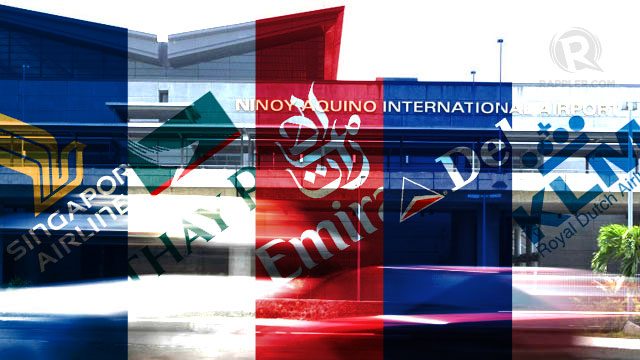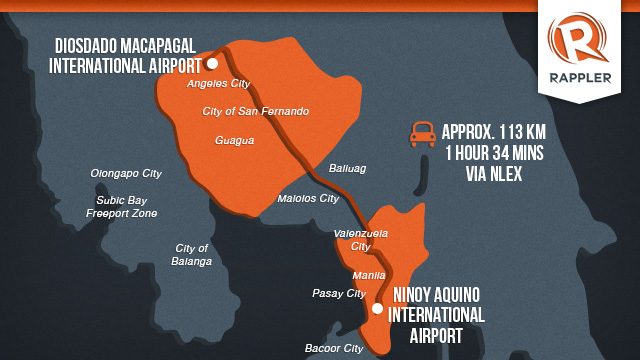SUMMARY
This is AI generated summarization, which may have errors. For context, always refer to the full article.

MANILA, Philippines – Upon the completion of an ongoing P1.9 billion ($42.7 million) rehabilitation project, five international airlines will transfer their operations to the Ninoy Aquino International Airport terminal 3 (NAIA 3) by August 2014, Department of Transportation and Communications (DOTC) Undersecretary Jose Perpetuo Lotilla said.
The 5 airlines expected to transfer from terminal 1 – Singapore Airlines, Cathay Pacific, Emirates, KLM, and Delta Airlines – will increase the number of foreign airlines operating in NAIA 3 to six, joining All Nippon Airways (ANA) which operates in the terminal building.
“They (airlines) have to do a lot of things such as construction of lounges and offices. I think they will transfer around August,” Lotilla added.
NAIA rehabilitation
Lotilla noted that the NAIA 3 rehabilitation project, undertaken by the Takenaka Corporation of Japan, is already 62% complete. The project is expected to be done in July, ahead of the initial August schedule.
The objective of the rehabilitation of NAIA 1 and NAIA 3 is to lessen the passengers in the old airport from the current 8 million to its original design capacity of 4 to 4.5 million passengers.
“We will be reducing the number of users of NAIA1 from the present eight million so it will now be back to its rated capacity of 4.5 million,” Lotilla explained.
The facilities and services being rehabilitated in NAIA 3 include gate coordination, baggage handling, computer terminals, flight information displays, and fire protection systems that will allow a faster and more pleasant experience for passengers flying in and out of Manila.
Lotilla also said that the P1.3 billion rehabilitation of NAIA 1 – by construction giant DM Consunji Inc (DMCI) – will be completed as scheduled by January 2015, in time for the Asia Pacific Economic Cooperation (APEC) Summit.
NAIA 1 had been named the world’s worst airport in 2011 and 2013 by a travel website. Wall St. Cheat Sheet, a US financial media company, also ranked NAIA 8th among the 10 Worst Airports in the World, known for their “smelly bathrooms, long lines and rude staff.”
Increasing number of tourists
According to the Manila International Airport Authority (MIAA), the number of international passengers increased by 3.1% in 2013 – from 31.88 million passengers in 2012 to 32.87 million in 2013. (READ: INFOGRAPHIC: Is 10-M tourists goal possible?)
Latest data from MIAA also showed that international passenger traffic reached 15.18 million in 2013 from 14.14 million in 2012, a 7.3% increase. The number of international flights also increased by 9.9% from 79,685 to 87,629.
Meanwhile, the number of arriving and departing domestic passengers decreased – from 17.74 million to 17.69 million – because of flight cancellations caused by weather disturbances like Super Typhoon Yolanda.

The DOTC is looking at making operational a new international airport by 2027, given the joint development of NAIA in Manila and the Clark International Airport in Pampanga.
A 2011 study by the Japan International Cooperation Agency (JICA) showed that the annual number of passengers in the Greater Capital Region (covering the National Capital Region and Regions 3 and 4A) would hit 106.7 million by 2040 from a lower 31.88 million in 2012. The study forecasted passengers rising to almost 50 million by 2020 and rising further to 75 million in 2030. – Rappler.com
Add a comment
How does this make you feel?
There are no comments yet. Add your comment to start the conversation.